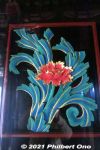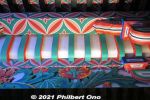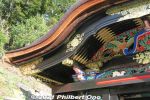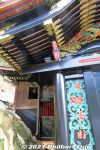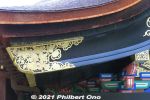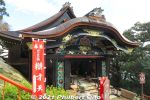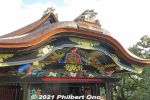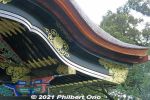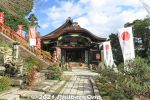 Image search results - "karamon" Image search results - "karamon" |
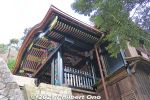
Karamon Gate (National Treasure)
|
|
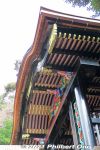
Karamon Gate roof eaves.
|
|
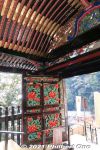
Karamon Gate door.
|
|
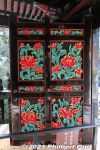
Karamon Gate door.
|
|
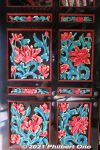
Karamon Gate door.
|
|
|
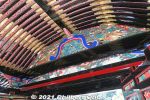
Behind the Karamon Gate.
|
|
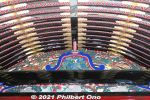
Behind the Karamon Gate.
|
|
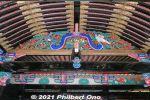
Front of Karamon Gate.
|
|
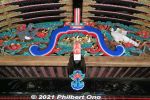
Nest of birds in this decorative, hump-shaped wood support called "kaeru-mata" (蟇股). Commonly found on entrances of important buildings. In Nikko, Toshogu Shrine's famous "Sleeping Cat" carving is also a kaeru-mata.
|
|
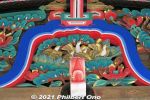
Closeup of the "kaeru-mata" showing a nest of birds. (蟇股).
|
|
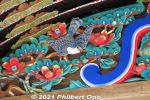
Left side of the kaeru-mata.
|
|
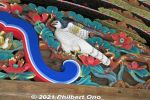
Right side of the kaeru-mata.
|
|
|
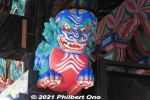
One of the lion dogs on Karamon Gate. Brought back to life from a drab-looking brown. It's part of a wooden protrusion called the "kibana" (木鼻).
|
|
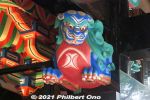
One of the lion dogs on Karamon Gate. It's part of a wooden protrusion called the "kibana" (木鼻).
|
|
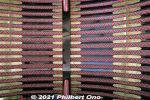
Ceiling inside Karamon Gate, looking directly upward.
|
|

Karamon Gate 唐門 (National Treasure) before it was restored in March 2020. See the next photo.
|
|
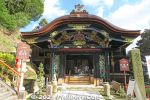
Karamon Gate 唐門 (National Treasure) beautifully restored to its original splendor. Entrance to the Kannondo Temple.This gate is said to have come from Toyotomi Hideyoshi's Gokuraku Bridge at Osaka Castle in the early 17th century (Momoyama Period). Chikubushima, Nagahama, Shiga.
|
|
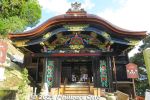
Karamon Gate looks new, but it's actually over 400 years old. "Karamon" (唐門) is a generic term for Chinese-style gates.There are other Karamon Gates in Japan, namely the more elaborate one at Nishi Hongwanji Temple in Kyoto. Karamon have colorful and intricate wood carvings and decorative features.
|
|
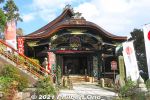
It looks new because it was magnificently restored (including the roof) after six years of meticulous work completed in March 2020. Finally came to see it. I was not disappointed. It's jaw-dropping beautiful.
|
|
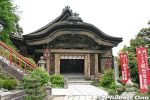
Karamon Gate before the restoration. Very drab-looking with most of the paint and lacquer weathered away by the elements after 67 years when it was last repainted.
|
|
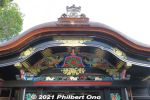
It's the entrance of the temple's Kannon-do Hall that worships Kannon. The gate features the karahafu roof gable shaped like a hump, commonly found on important traditional buildings such as temples and castles.
|
|
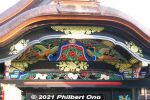
The roof was also entirely restored. The gate is a splendid example of the finest art from the Momoyama Period (late 16th century).
|
|

Before photo. Without the colors, it was so hard to see the wood carvings.
|
|
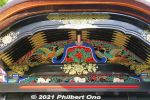
Some of the wood carvings had pieces that broke off or worn out. So they were reconstructed too. The metal fittings were also re-plated or remade.
|
|
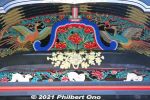
Never noticed those white rabbits before...
|
|
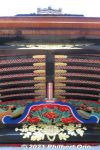
It's really pleasing to see this and other major National Treasures being restored during the past 10 years. There's also Nikko Toshogu Shrine in Tochigi and Menuma Shodenzan Temple in Saitama which have been refreshed with vibrant colors and laWith modern technologies, computers, laser measurements, and scientific techniques, restoration specialists can more accurately assess and reproduce the original colors and pigments. But much of the work is done by hand.
|
|
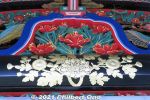
The only damper on this stupendous work is that, the contractor who did the job and the local government employee in charge of the project were found to have colluded to rig the bidding process. The project's budget was leaked to the contractor before the bidding started. Both parties were arrested a few months after the job was completed. At least the police waited until the job was done before arresting them.
|
|
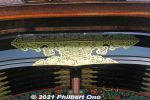
Center metal fitting on the Karamon.
|
|
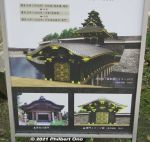
Karamon Gate was originally built in 1596 as the gate for a covered wooden bridge named Gokuraku-bashi (極楽橋) at Osaka Castle as depicted here.
|
|
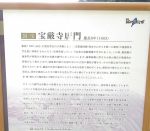
The gate and other castle structures were later moved to warlord Toyotomi Hideyoshi's mausoleum in Kyoto in 1600. In 1603, Hideyoshi's son ordered Karamon Gate to be moved to Chikubushima to help rebuild Hogonji Temple which was in disrepair at Chikubushima had close ties to Toyotomi Hideyoshi since he was once the lord of Nagahama Castle. Chikubushima was part of his domain.
|
|
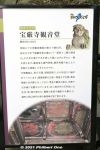
About the Kannon-do Hall.
|
|
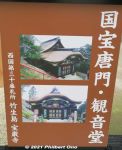
What the Karamon looks like with the doors closed.
|
|
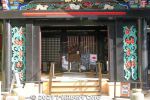
Karamon Gate entrance to Kannon-do Hall.
|
|
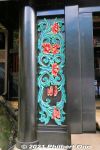
Left door of Karamon Gate.
|
|
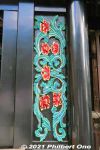
Right door of Karamon Gate.
|
|
|
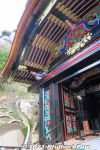
Left side of Karamon Gate. The gate doors are also adorned with peony flower carvings.
|
|
|
|
|
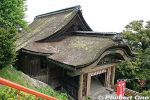
Before the renovation, Kannon-do and Karamon Gate had this old, moldy roof.
|
|
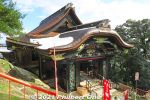
The roof was also rethatched with new cypress bark. The last time the building was reroofed was in 1972. (The white patch is snow.)
|
|
|
|
|
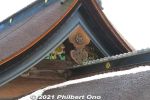
A pair of tigers on the main roof.
|
|
|
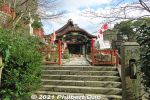
Path to Karamon Gate.
|
|
|
|
|
|
|
|
|





